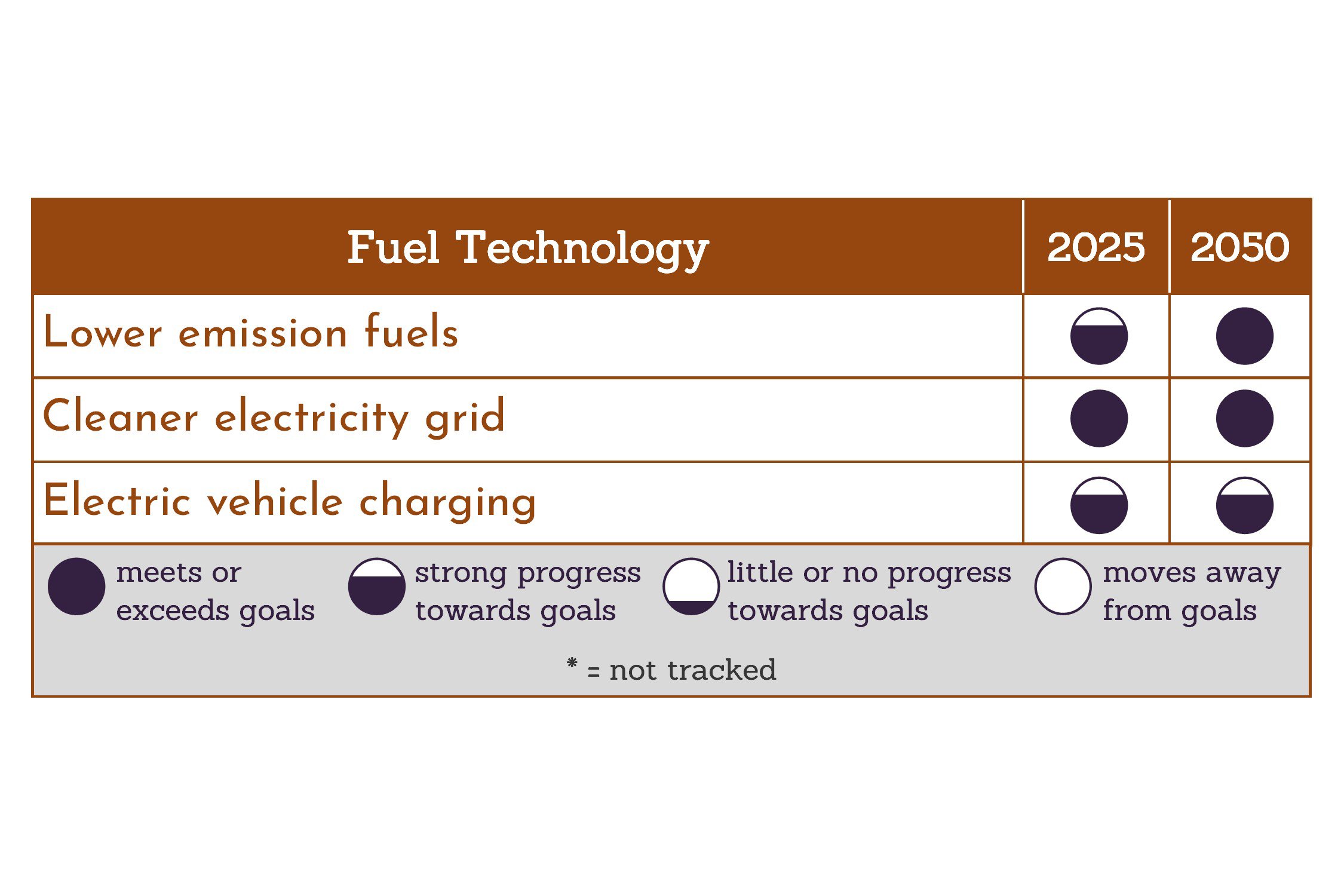
Greenhouse gas emissions include carbon dioxide, which is produced when vehicles burn fuel that contains carbon. To reduce those emissions, Oregon needs to lower the amount of carbon in those fuels, or use less fuel.
Some examples of fuels that produce lower emissions:
Electricity.
Blended fuels (like ethanol added to gas, and biodiesel.)
Renewable diesel.
Renewable natural gas.
Clean hydrogen.
Renewable propane.
Some of these fuels require new vehicle technology or fueling infrastructure in order to use them, while other fuels can use existing technology and infrastructure.
Fuel technology focuses on ways to reduce the amount of carbon emitted by the fuels Oregon uses for transportation.
Carbon intensity and lifecycle emissions
Carbon intensity is the amount of greenhouse gas emissions a fuel emits per unit of energy it produces. Greenhouse gases are carbon dioxide, methane, and nitrous oxide.
Different fuels have different carbon intensities. Oregon measures a fuel’s carbon intensity across the entire “life” of a fuel, including: what it’s made from; how it’s made; how it’s transported to Oregon; and how it’s used to power our vehicles. This measurement is called lifecycle emissions.
For example, gasoline lifecycle emissions factor in emissions from: drilling, pumping, refining, distribution to the local gas station, and emissions from a vehicle’s tailpipe.
For electricity, carbon intensity factors in where the electricity is generated, because electric vehicles do not produce tailpipe emissions when they’re driven. Carbon intensities of electricity can vary; electricity generated by hydropower would have a significantly lower carbon intensity than electricity generated by coal, for example. Learn more about Oregon’s electricity resources.
Progress snapshot
Lower emission fuels
New regulations ensure the carbon intensity of transportation fuels will continue to decline through 2035, which in turn will lower emissions from those fuels. (Learn more about Oregon fuels mix.)
Cleaner electricity grid
Oregon’s electricity grid is among the cleanest in the nation, and new regulations will push towards zero emission electricity by 2040.
Electric vehicle charging
Oregon is a leader in public EV charging infrastructure for cars, trucks and SUVs, and has plans to expand that network. However, more investments are needed at all levels. . Specifically, refueling infrastructure for larger vehicles like delivery vans, school buses, and long haul trucks is lagging behind.
Explore each category below for an in-depth breakdown of our progress.
